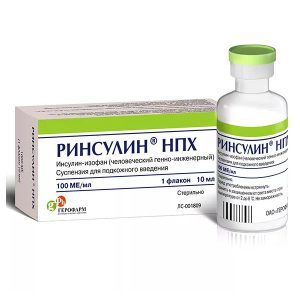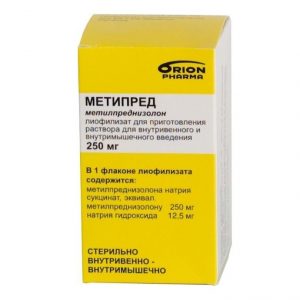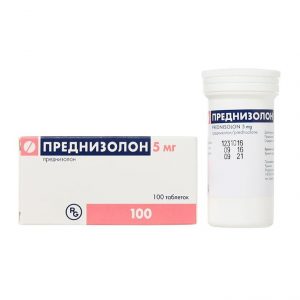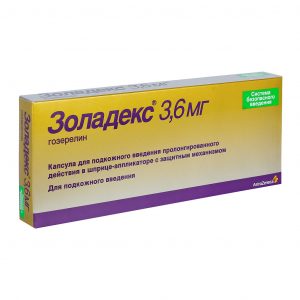Description
Release form
Film-coated tablets
Packing
28 pcs.
Indications
Type 2 diabetes mellitus to improve glycemic control in case of ineffective diet therapy and physical activity:
in adults as monotherapy, in combination with other oral hypoglycemic agents or with insulin.
Contraindications
hypersensitivity to alogliptin or to any auxiliary substance, or serious hypersensitivity reactions to any history of DPP-4 inhibitor, including anaphylactic reactions, anaphylactic shock and angioedema
type 1 diabetes mellitus
diabetic ketoacidosis
chronic heart failure (functional class III-IV according to the functional classification of chronic heart failure New York Cardiac Association)
severe liver failure (more than 9 points on a scale of 5) due to the lack of clinical data on the use of
, severe renal failure
pregnancy, the period of breastfeeding – due to the lack of clinical data on the use of
children under 18 years of age – due to the lack of clinical data on the use.
Precautions
A history of acute pancreatitis (see Special instructions).
In patients with moderate renal failure (see Special instructions).
In combination with a sulfonylurea derivative or insulin (see Special instructions).
Taking a ternary combination of Vipidia with metformin and thiazolidinedione (see Special instructions).
Use during pregnancy and lactation
No studies have been conducted on the use of alogliptin in pregnant women. Animal studies have not shown a direct or indirect negative effect of alogliptin on the reproductive system. However, as a precaution, the use of Vipidia during pregnancy is contraindicated.
There is no data on the penetration of alogliptin into human milk. Animal studies have shown that alogliptin passes into breast milk, so the risk of side effects in babies cannot be ruled out. In this regard, the use of the drug during breastfeeding is contraindicated.
Composition
1 tablet 25 mg contains
Active ingredient: alogliptin benzoate – 34 mg (in terms of alogliptin -25 mg).
Excipients:
Core: mannitol 79.7 mg, microcrystalline cellulose 22.5 mg, hyprolose 4.5 mg, croscarmellose sodium 7.5 mg, magnesium stearate 1.8 mg.
Film coat: hypromellose 2910 5.34 mg, titanium dioxide 0.6 mg, dye iron oxide red 0.06 mg, macrogol-8000 trace amounts, ink gray F1 trace amounts
Dosage and administration of
The drug is taken orally.
The recommended dose of Vipidia is 25 mg once daily as monotherapy or in addition to metformin, thiazolidinedione, a sulfonylurea derivative or insulin, or as a ternary combination with metformin, thiazolidinedione or insulin. The drug Vipidia can be taken regardless of the meal. Tablets should be swallowed whole without chewing, washed down with water.
If the patient has missed taking Vipidia, he should take the missed dose as soon as possible. It is unacceptable to take a double dose of Vipidia on the same day.
When prescribing Vipidia in addition to metformin or thiazolidinedione, the dose of the latter drugs should be left unchanged.
When combining Vipidia with a sulfonylurea derivative or insulin, it is advisable to reduce the dose of the latter to reduce the risk of hypoglycemia. In connection with the risk of hypoglycemia, caution should be exercised when prescribing a three-component combination of Vipidia with metformin and thiazolidinedione. In the case of hypoglycemia, it is possible to consider a decrease in the dose of metformin or thiazolidinedione. The efficacy and safety of alogliptin when taken in triple combination with metformin and a sulfonylurea derivative have not been studied.
Patients with renal failure
Patients with mild renal failure (creatinine clearance from> 50 to <80 ml / min) dose adjustment of Vipidia is not required. In patients with moderate renal failure (creatinine clearance from> 30 to <50 ml / min), the dose of Vipidia is 12.5 mg once a day. Alogliptin should not be used in patients with severe renal insufficiency and patients with end-stage renal failure requiring hemodialysis (creatinine clearance from patients with renal insufficiency is recommended to evaluate renal function before treatment with Vipidia and periodically during treatment. Patients with hepatic impairment insufficiency No dose adjustment of Vipidia is required in patients with mild to moderate hepatic insufficiency (from 5 to 9 points for Child-Pugh scale) .The drug has not been studied in patients with severe liver failure (more than 9 points on the Child-Pugh scale), therefore, it should not be used in this group of patients. over 65 years old. Nevertheless, the dose of alogliptin should be especially carefully selected in connection with the potential possibility of decreased renal function in this group of patients. Side effects of Disorders of the nervous system: Often: headache. Disorders of the gastrointestinal tract: Often: epigastric pain, gastroesophageal reflux disease. Frequency not set: acute pancreatitis. Disorders of the liver and biliary tract: Frequency not found: impaired liver function, including liver failure. Disorders of the skin and subcutaneous tissue: Often: itching, rash. Frequency not found: exfoliative skin diseases, including Stevens-Johnson syndrome, angioedema, urticaria. Infectious or parasitic diseases Often: upper respiratory tract infections, nasopharyngitis. Immune system disorders Frequency not found: hypersensitivity reactions, including anaphylactic reactions. Drug interactions Effect of other drugs on alogliptin Alogliptin is mainly excreted unchanged by the kidneys and is slightly metabolized by the cytochrome (CYP) P450 enzyme system. In studies on the interaction with other drugs, the following drugs did not have a clinically significant effect on the pharmacokinetics of alogliptin: gemfibrozil (a CYP2C8 / 9 inhibitor), fluconazole (a CYP2C9 inhibitor), ketoconazole (a CYP3A4 inhibitor), cyclosporine (a r-glyc inhibitor) β-glycosidases, digoxin, metformin, cimetidine, pioglitazone or atorvastatin. The effect of alogliptin on other drugs In vitro studies have shown that alogliptin does not inhibit or induce CYP 450 isoforms at the concentrations achieved with alogliptin at a recommended dose of 25 mg. Interaction with CYP 450 isoforms is not expected and has not been identified. In vitro studies have shown that alogliptin is neither a substrate nor an inhibitor of OAT1, OATZ and OST2. In addition, clinical trial data do not indicate interaction with p-glycoprotein inhibitors or substrates. In clinical studies with other drugs, alogliptin did not have a clinically significant effect on the pharmacokinetics of the following drugs: caffeine, (R) – and (S) -warfarin, pioglitazone, glibenclamide, tolbutamide, dextromethorphan, atorvastatin, midazolam, oral contraceptives (norethindrone and ethinyl estradiol), digoxin, fexofenadine, metformin or cimetidine. Based on these data, alogliptin does not inhibit the isoenzymes of the cytochrome CYP1A2, CYP3A4, CYP2D6, CYP2C9, p-glycoprotein and OCT2. Alogliptin had no effect on the prothrombin index or International Normalized Ratio (MHO) in healthy volunteers when taken with warfarin. The administration of alogliptin in combination with metformin, or pioglitazone (thiazolidinedione), or an -Glycosidase inhibitor, or glibenclamide (sulfonylurea derivative) did not show clinically significant pharmacokinetic interactions. overdose The maximum dose of alogliptin in clinical studies was 800 mg / day in healthy volunteers and 400 mg / day in patients with type 2 diabetes for 14 days. This is 32 and 16 times, respectively, higher than the recommended daily dose of 25 mg of alogliptin. There were no serious undesirable effects when taking the drug at these doses. Gastric lavage and symptomatic treatment may be recommended for overdose. Alogliptin is poorly dialysable. In clinical studies, only 7% of the dose was removed from the body during a 3-hour dialysis session. There are no data on the effectiveness of peritoneal dialysis alogliptin. Storage conditions Do not store above 25 ° C. Shelf life 3 years. Active ingredient Alogliptin Terms and conditions prescription tablets Dosage form Possible product names vipidia tablets 25 mg 28 pcs. Takeda GmbH, Japan




